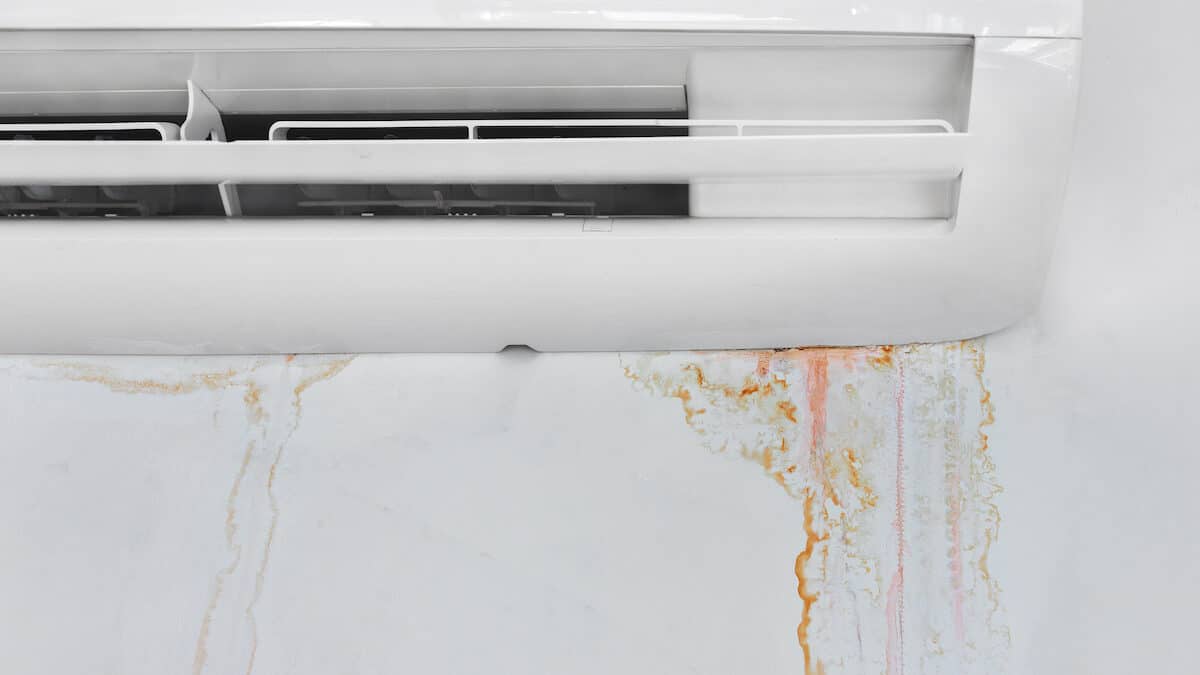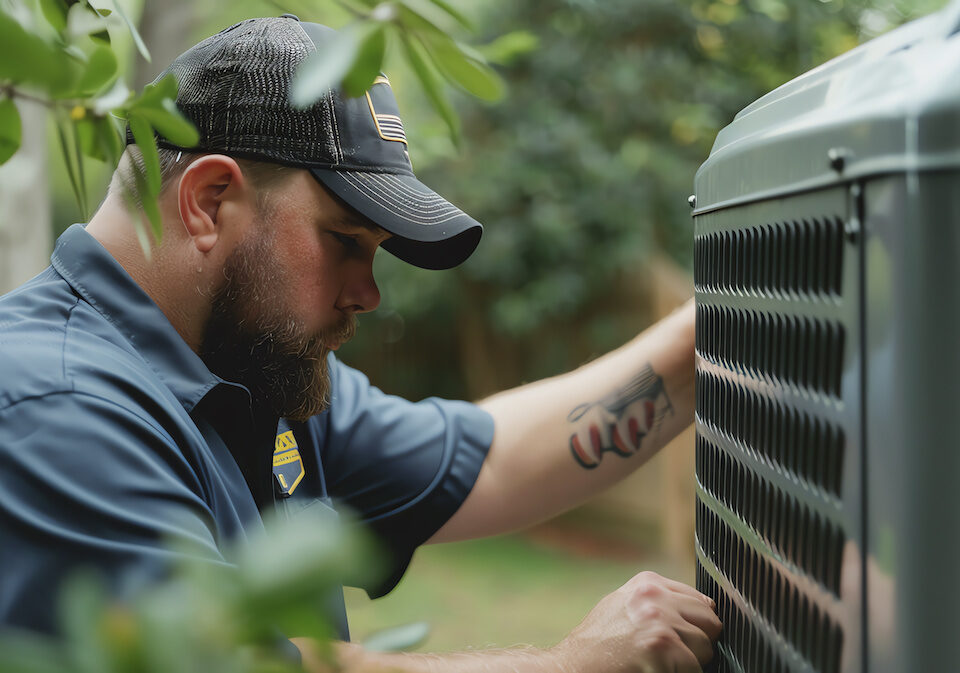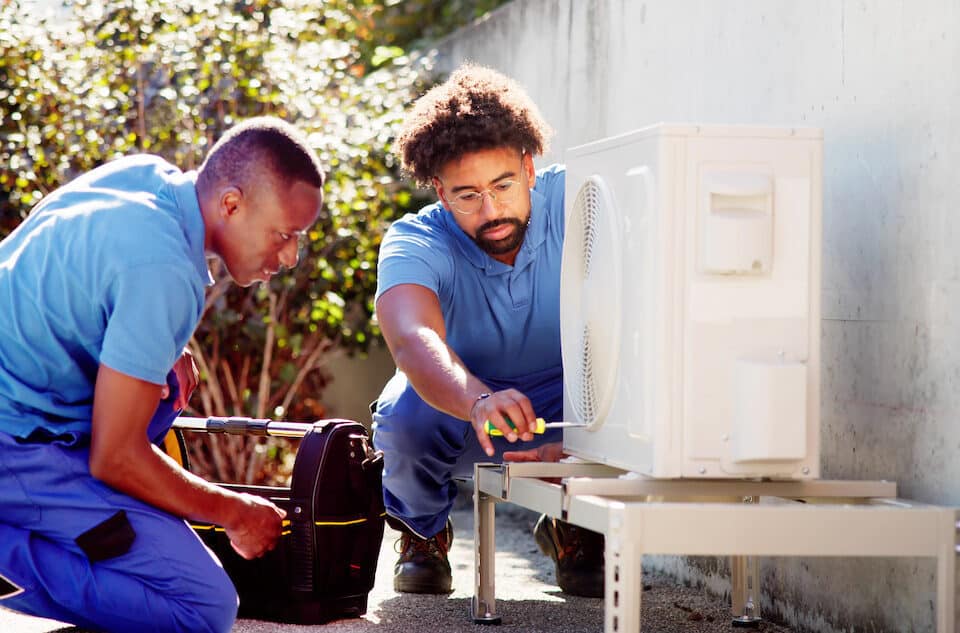Help! My AC is Leaking Water

If you turned on your air conditioner and it sprung a leak, you don’t necessarily have to call a professional. Although you should always have your HVAC unit professionally tuned up every spring and fall, little repairs and efficiency enhancements can often be completed by the savvy homeowner.
Finding water anywhere it doesn’t belong in your house is a major cause for concern. Not only are you worried about where the leak is coming from (and how much it will cost to fix it!) but you’re also concerned about damage to your home. When it’s your air conditioner leaking water inside, you need to act fast to prevent water damage as well as expensive repair bills.
But before you try to figure out why, TAKE THESE STEPS FIRST to prevent or at least minimize damage: TURN OFF THE AC SYSTEM. This is essential to stop the water flow and also protect your equipment from further damage. Clean up the water that’s leaked to prevent damage to walls, floors, ceilings, and even furniture and decor in your home.
If you find an air conditioning leak, address the issue immediately before you have a real problem on your hand. Here’s how.
The Problem With a Leaking Air Conditioner
Leaking air conditioners can destroy ceilings, walls, and anything else around it. If you notice water under your indoor air handler, turn off the air conditioner at the breaker box and either call a professional or follow these steps: There are only a few causes of a leaking air conditioner, the first one being a frozen evaporator.
Dealing With a Frozen Evaporator Coil
Since refrigerant flows through your evaporator coils and requires proper airflow to absorb heat, if the airflow is restricted, ice will form and drip water. Frozen evaporator coils can also be caused by dirty coils, blocked vents/registers, broken blower motor, or lack of refrigerant. Frozen evaporator coils mean that your refrigerant can no longer take in the heat from your home.
If you notice a frozen evaporator coil, turn the unit off immediately and do not turn it on again until the cause of the problem is remedied.
Have You Changed The Air Filter Lately?
You should be changing out the air filter more in the summer when your air conditioning system will be running for extended periods of time.
If replacing your air filter and clearing all your vents doesn’t fix the problem, you might have a low refrigerant charge, which requires the services of a professional.
Your drain pan is located underneath your indoor air handler (which houses your evaporator coil), and catches any condensation from your air conditioning unit.
The pipe is usually connected to your drip pan and discharges the condensate outside. Use a wet-dry vac to clean the overflow pan and inspect the bottom, corners, and edges with a flashlight. You can temporarily fix a cracked drain pan with a water sealant, but it is best to just replace the damaged item.
If you decide to patch up the leak, you will have to leave the permanent one in place while you do it.
You will have to call a professional for the primary pan replacement since it is welded in place, but auxiliary pans can be replaced by the do-it-yourselfer.
It Could Be a Clogged Drain Line
The third reason why your air conditioner might be leaking is a clogged drain line.
Issues with the condensate drain line are the most common cause of an air conditioner leaking water inside the house. As you may know, the way your air conditioner cools is by removing water vapor from the air, which condenses into water (called “condensate”).
So, the drain line is a primary suspect when it comes to water leaks. If it gets clogged with dirt and debris (which are carried into the line along with the condensate) the backup can cause leaks or a rupture of the line. Another possible drain line issue: if your installers didn’t do a great job, the drain line might not be securely connected.
The condensate line can become blocked with fungi, algae, and debris. It’s necessary to clear the drain line every once in a while. You can call a professional or try to do it yourself.
Locate the PVC pipe near your air handler’s drain pan. It should have a piece of pipe sticking up at a 90-degree angle with a little cap on top. Clean the out.
If your drain line is still clogged, you will have to decide if you will call a professional or use a wet-dry vac to clear the line yourself. Locate your outdoor condensate drain line near your condenser unit, connect your wet-dry attachment, and turn the vacuum on.
If You’re Unsure of What You’re Doing Call In a Professional
Sometimes DIY should be DDIY, don’t do it yourself. For an important appliance like your AC, you want to make sure you know what you’re doing before you start fiddling with it.
Contact us here at Trust HVAC for a free inspection and estimate to fix your leaking AC for you.



